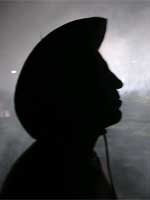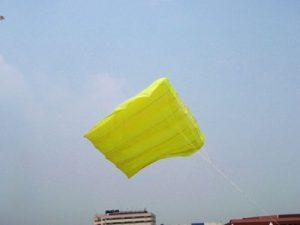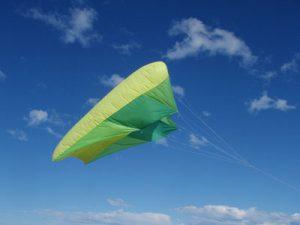 Errata
Errata
Yes, mistakes have been made!
Religion for one thing: faith based beliefs are a really really bad idea- and nothing will persuade me that this isn’t so.
Climate change for another. What if we’re about to tip the planet into meltdown?- and what about if we’re not? And why is it that the secular left enthusiastically embraces mankind’s guilt as an act of faith while the religious right demands more evidence?
And culture; every sort of unacceptable behaviour sanctioned in the interests of ‘cultural sensitivity’. But I aint got none (culture that is) so you can’t pin this one on me.
And now some idiot has suggested that girls can’t fly kites.
And that was me, whoops, please put away your instruments of torture, I RECANT!*
But seriously, I have made a mistake I think, well, more than one I’m sure, but one in particular.
A central principle of my attempts to develop a useful theory as to why single line kites (often don’t) fly is undercorrection- overcorrection.
When a kite undercorrects, it takes so long to get back in alignment with the wind after being disturbed in some way (turbulence etc) that it traverses right off to one side of the wind window while doing so- sometimes even descending to ground level and hovering there on it’s side.
When a kite overcorrects, in responding to misalignment, it overshoots- starts figure eighting with increasing amplitude, then loops and crashes.
I believe that this distinction is fundamental because almost every change that can be made to a kite will have opposite effect depending on whether it’s initially inclined to undercorrection or to overcorrection. For example; if a kite is tending to overcorrect then, usually, shifting the bridle point down (that is, increasing it’s angle of attack) will improve stability. However, if a kite is undercorrecting then such a bridle change will make it worse.
Most kitemakers are familiar with overcorrection and have an extensive arsenal of solutions; back bridling, bigger keels, more flexible sticks, a longer tail and etc.
But they will often not even recognise undercorrection for what it is, dismissing it as some asymmetry which is causing the kite to lean off to one side or the other. Although some otherwise insignificant asymmetry will determine which side a kite tends to lean to if it’s so inclined, asymmetry is usually not the fundamental cause. Rather, the relationship between the kite’s centre of lift and its centre of gravity, it’s aspect ratio (wide kites tend to undercorrection), positioning of lift and drag elements, or the distribution of it’s lateral area will be the real culprit.
Ah, and this last is where I’ve been in error for all my kiteflying life- having failed to recognise something fundamental until a few weeks ago. I’d guess that it’s effected about half of all the kites I’ve ever tried to make (finally explaining a characteristic of the PLT box kite design that’s been annoying me since 1973 ). For the last few nights I’ve been waking up in a cold sweat from remembering the many kites I’ve consigned to the rubbish bin through failure to understand this simple thing- and just in case you’re about to rush off an email saying “Oh I’ve known about this effect for years”, just DON”T!
It’s a new (to me) “LAD” (lateral area distribution) effect.
The basic LAD effect – which we’ve all known about forever, is easiest to visualise and understand by thinking about wind vanes. Wind vanes (used to indicate wind direction) have a horizontal arm on a vertical pivot with a fin or vane at the end of the arm. The vane always aligns itself downwind of the pivot point, never upwind of it. Kites are wind vanes- there needs to be more ‘vane’ area towards the rear than at the front or the kite will turn against the wind direction. For example, delta kite keels are usually cut away at the front. When they aren’t, that is, have keels that run the full length of their spine, the reverse wind vane effect that this causes can make them tend to fly off to one side or the other.
All very clear and simple!
As a rule therefore, I’ve always disposed lateral area rearward on kites I build so as to eliminate any possible reverse wind vane effect.
And I’ve been wrong.
Having too much lateral area to rearward can have the same effect as having too much forward.
This is where a picture is worth a thousand words:


The photo of a yellow prototype pilot kite clearly shows what can happen if there is too much lateral (keel) area towards the kite’s rear. When this kite leaned off to one side or the other (from any number of causes – turbulence, wind shifts, interference from another kite, while launching , etc) it went into a mode where wind forces on the rear part of its keel prevented it straightening up. From the photo; airflow is diagonally across the kite. Wind forces trying to push the kite’s nose back up are not sufficient to overcome the wind forces acting on the rear parts of the keels that are trying to tip it over.
It would fly fine for a while- sometimes all day even, but if it ever started to lean off to one side or the other, once begun, the tendency became terminal.
I’ve seen this annoying behaviour before- many times with many different kite styles, and have had rafts of theories to explain it (like that it the bridles were too short)- none of which have been satisfactory- until now.
That I finally caught on to what has been happening is because I’d just changed the keels on this prototype- keeping the same area but distributing the area more to the rear- to fix what I thought was a reverse wind vane effect; but it made the behaviour worse not better.
Thinking about various kites I’ve known that behaved badly in this sort of way, it’s clear to me now that every kite that has significant rearward lateral area can be subject to it. This includes all longitudinally symmetrical cellular kites- box kites and ‘snowflake’ styles- and finally explains why Slarcs head off to the edge sometimes- and suggests how this can be cured.
And, kites that don’t have any (or not much) lateral area (soft kites such Ray’s, and some fish styles for example) can do a similar thing but by a different mechanism: In their case it also occurs when wind flow establishes diagonally across the kite rather than longitudinally, but the assymetric lift this generates comes entirely from the kite’s body, not from lateral surfaces. When a Ray kite leans so that the wind is hitting one wing square on instead of striking each wing equally, lift forces generated by diagonal flow over the rear part of the body can then become greater than correcting forces from the nose area. It will then either hang off to one side or, in the worst case, fall over to that side completely- often inverting in the last stages.
A key marker for this behaviour is that a sight up the line while the kite is hanging to one side will hit a point on the kite that’s noticeably off centre.
An insidious aspect is that , unless a kite has a really bad case, it may only manifest occasionally. This is because there’s a trigger point, a minimum angle of lean that a kite has to get to set it off. While the wind is strong and steady, a kite may never get to this angle, and will seem to be perfect.
Unfortunately, for many theme style kites, it may be incurable except by changing these kite’s shapes in ways that are graphically unacceptable. Probably there will be ways over, around, and through that I previously haven’t even known to look for though.
For kites (parafoils and the like) that aren’t subject to shape or design constraints, for me, one more unknown (and an unknown unknown at that) has just moved over to the other side of the ledger.
Peter Lynn, Ashburton, 31 August ’09
PS. Just to be sure, I made new keels for the yellow pilot which have more area forward and less towards the rear- and yes, it’s cured.
*but ladies; please learn how to tie knots.
